A dedicated scan desk
This week: Sweeping flues; Being driven by the data; A dedicated scan desk;

It has been a busy week here, but a successful one.
True, it has rained quite a bit which has curtailed outside work, but I have had some diversions.
Some books have been delivered, including this 1951 Police and Constabulary Almanac, in beautiful condition.

These books hold a mine of useful information for police historians, however I seldom see old volumes in such an almost pristine condition.
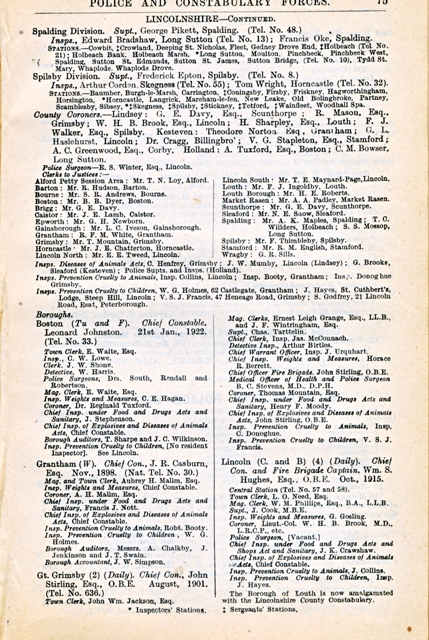
Other books included some Home Office Enquiry reports and general history books.
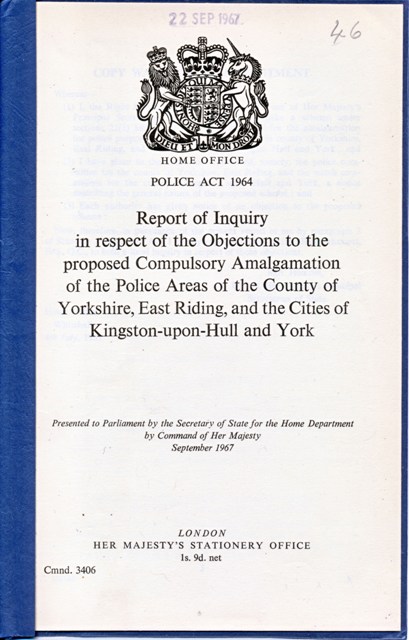
Altogether an esoteric collection, but as the rain is still falling, it means I am able to dive into this world of history without feeling too guilty about not working in the orchards.
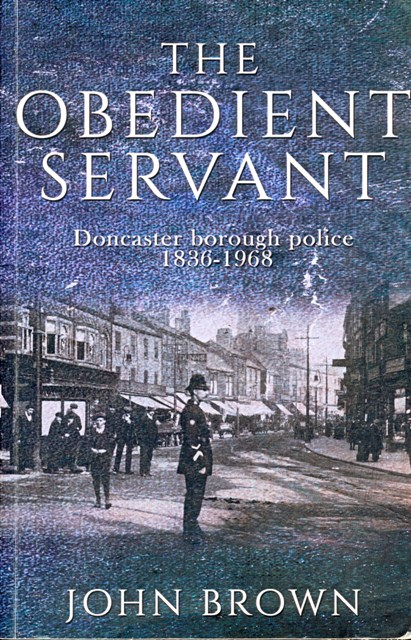
The chrysanthemums still look beautiful. A flash of brilliant colour on otherwise damp and dull autumnal days.

The weather remains warm, and several degrees above the average. I have had to use Dipterol when working outside this week, to fend off the mosquitoes.
I have never been bitten so late in the year, or had to use a repellent in November. In this part of the world, such climate changes will mean that soon biting insects like mosquitoes will be an all-year-round pest.
Sweeping flues
Cleaning the wood stove flue is one of those jobs I have been going to do for months!
As the nights draw in, we are steadily approaching the time when I will need to light the fire to get the central heating working.
Looking back through my journal, I found the date when I last lit the wood stove – March 18th, however for the previous 10 days I had not been lighting the fire every day.
Effectively by the end of February I only need a couple of hours of heat a day.
I have just two tools to clean the flues on my wood stove. a wire brush for the narrow pipes and a half moon scraper for the wide pipes.
Opening the flue is easy. I just pull the air radiator above the wood stove away from the flue pipe which goes through the wall to the outside flue.
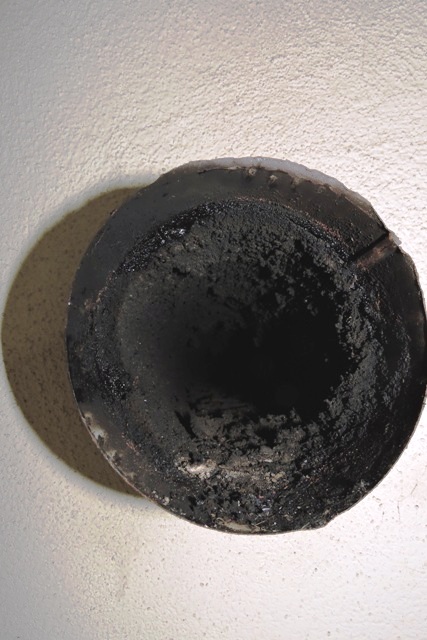
The perspective makes the accumulation of carbon look much worse that it actually was.
Just as in previous years, there is an accumulation of burnt, glossy residue inside the pipes. This isn’t soot, it is carbon, the remains of the wood I burn.
So carefully lifting the pipes outside, I then cleaned them, inside and out.
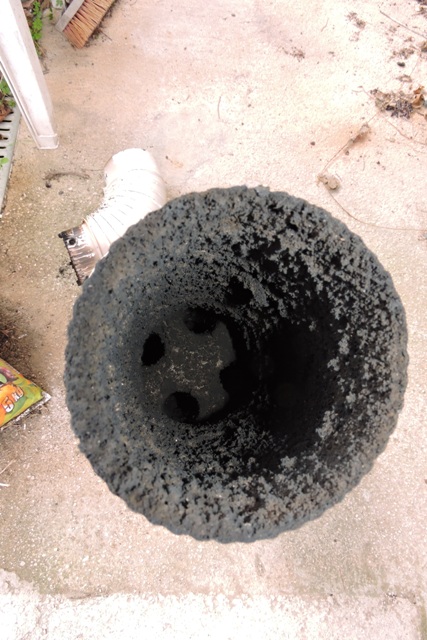
The pipes are stove enamelled steel, which I painted with high temperature cream paint, to match the interior walls in my diningroom.
They were starting to show their age, so I went looking for the spray paint can. However I couldn’t find it in the workshop. I think I probably used it up.
Peering into the top of the wood stove, it looked as though there was a build up of ash in the chamber under the flue pipe.
I removed the four self tapping screws which lock the top plate in place and lifted it off. I think it is four years since I took the top off to clean above the burn chamber.
Removing the top meant that I pulled away the heat resistant fire rope which seals the top, so smoke and gasses don’t escape. I couldn’t find any of that in my spares box either!
So a trip down to Volat was called for and I came home with white high temperature paint – they didn’t have any cream – and fire rope.
What I did have already in stock was the fire mastic to seal the holes up. I painted the air radiator and pipe but I’, not happy with the colour. It is too bright.
Next time I go to Bauhaus in Split, I will buy some cream high temperature paint and respray the pipes in situ.
I bedded the fire rope in the mastic, to hold it in place around the edge of the stove and then replaced the stove top.
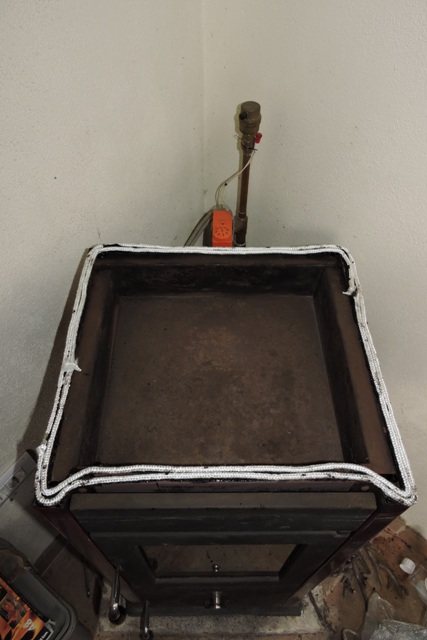
Next I refixed the air radiator and flue in place and left the mastic to dry.
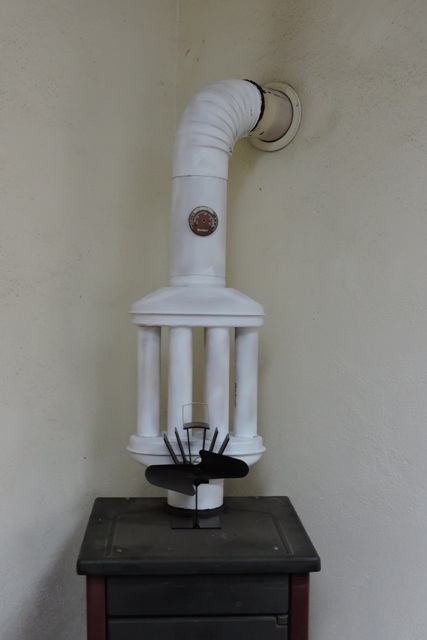
I’m ready now, with a fire laid, for the first lighting of the wood stove, once the temperature has dropped some more. And yes, the walls could do with a re-paint too….
Being driven by the data
I am not obsessed with statistics, data, accuracy or spreadsheets. A computer is just a tool to help me understand the world where I live!
I was woken a couple of times on Thursday morning because I had two of my felines, one by my feet, the other against my back, who were complaining when I moved in my sleep.
“It must be cold outside”, I thought. When I checked, it was.
For the first time since April, the outside air temperature had fallen below 10ºC. Only by one degree, but enough for it to feel “fresh” when I got up.
Checking the data for the polytunnel, the temperature inside had also fallen below the 10ºC mark.
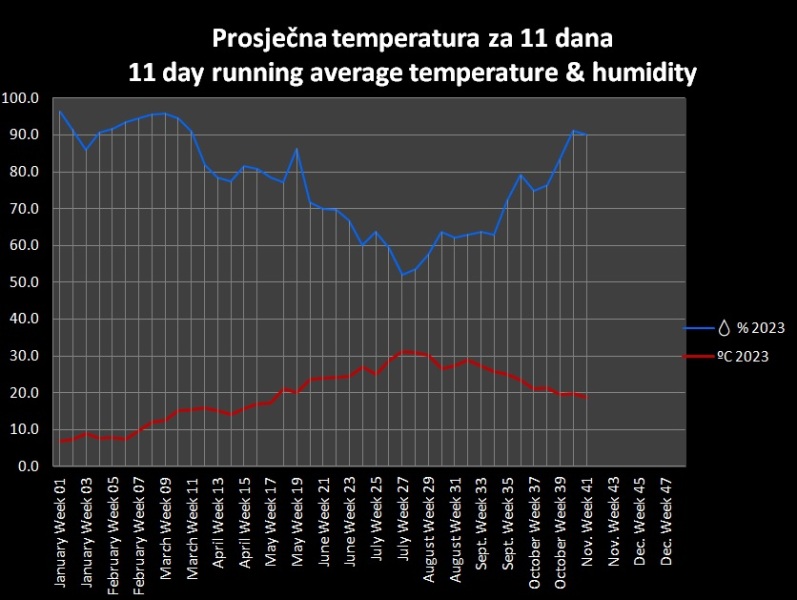
An analysis of the data showed me that the 11 day average was now almost at the level where I had removed the plastic sheeting at the end of March. So I decided to replace it.
The plastic sheet was rolled up when I removed it in the spring, however I needed to add some eyelets to prevent it tearing.
Strong sun and the associated UV light will decompose plastic, making it brittle and unusabale in a matter of weeks here.
That is one of the reasons to remove it, so I can re-use it, but also to allow air to circulate inside the polytunnel and to prevent overheating.
I already had the 12mm eyelets in stock and the crimping tool to install them.
The first job was to undo the butterfly nuts and to remove the wooden battens. The wood had swollen with the rain, so I enlarged the holes to make it easier to refit.
Then I marked and used a die stamp to cut a circular hole where each fixing bolt was.
Crimping the top row was easy. However because the crimping machine was small, I could not get it into place to crimp eyelets in the middle row.
By rolling the plastic sheet at the bottom I did crimp eyelets in the bottom row.
So with a wooden batten across the middle and the plastic held tightly at the top and bottom, the lack of eyelets in the middle should not cause the plastic to tear.
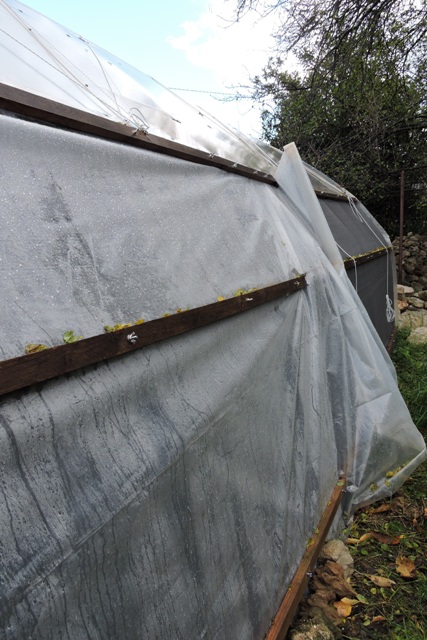
That description didn’t take long to write. In practice, crimping was time consuming and it took a full working day to complete just two thirds of the polytunnel.
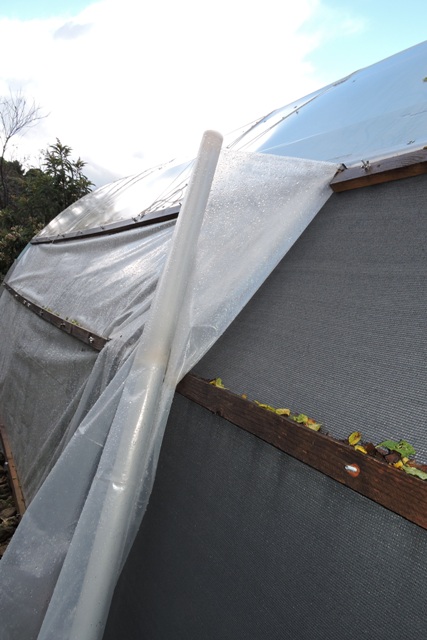
With rain on Friday and Saturday, I will have to wait until Sunday or Monday to finish the job.

A dedicated scan desk
I am an inveterate collector… and no, I don’t collect “inveterates”.
It means I have been collecting things for a long time. A very long time in fact.
Many of the collections are languishing in boxes at the moment, waiting for Cvjetko to finish the Konoba. Others are in thick lever arch files, or on book shelves.
I have several thousand photographs which I really, really need to scan. They vary from 35mm film strip and colour slides, to A4 and A3 prints.
Then there are books, like the Police Almanacs.

I sent a scan of a couple of pages from this week’s acquisitions to a friend who is researching the men and women of the Great Grimsby Borough Police. A small force which existed from 1846 to 1967.
I have the 1956 booklet on the history of the Grimsby force on my desk, waiting to be scanned. In fact there is quite a pile of things which are waiting to be scanned.
158 editions of the Almanac were published, the last being eight years ago in 2015. Surprisingly there is no complete collection anywhere in the world. I have a meagre collection of 48.
On a wet, grey and dark Friday afternoon, being rendered immobile by a feline on my knee and another on the desk in front of me (with the remainder dotted around my home, doing what felines do on wet winter afternoons), I decided I really should look at streamlining my scanning operation workflow.
I’m not short of specialised scanners, having seven. They are highly specialised devices, each with a particular use.
I even have a dedicated computer on the desk, which I started to set up a year ago, then other work got in the way.
It took more than an hour and a half just to update the Windows operating system, then I needed to add the drivers for the different devices. All this before I even turned one of the devices on.
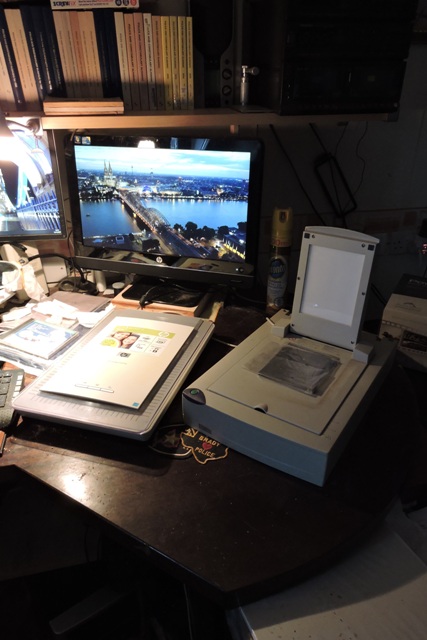
It has 1 terabyte of storage, so while the computer was updating, I ordered some solid state 2TB hard disc drives for backup. I assiduously back up all my work.
But then obsessive compulsive disorder, sometimes called Plyushkins disorder, is closely aligned with collecting.
There is little point expending time, effort and energy in scanning rare artefacts, only to lose the scans in a computer crash.
After a day and a half’s work, I have a powerful dedicated computer, just for scanning. Maybe now, I can remove some of the clutter from my work desk! NCG